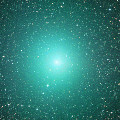
|
It passed only 0.036 a.u. from the earth on Mar. 21-22, and brightened up to 3.9 mag (Mar. 21, Thomas Lehmann). It is very bright as 5.5 mag still now (Apr. 2, Marco Goiato). It keeps observable in good condition after this both in the Northern Hemisphere and Southern Hemisphere. It may fade out very rapidly. The orbital elements are similar to those of P/2016 BA14 ( PanSTARRS ).
Date(TT) R.A. (2000) Decl. Delta r Elong. m1 Best Time(A, h)
Apr. 2 17 33.96 -9 55.5 0.078 1.027 108 6.5 4:19 (349, 44)
Apr. 9 17 33.26 -0 15.9 0.116 1.055 114 8.7 4:08 (353, 54)
|

|
Now it is very bright as 8.7 mag (Feb. 14, Thomas Lehmann). It brightened temporarily in outburst in early January, but it returned to the original brightness. It will pass close to the earth from spring to summer, and it is expected to brighten up to 5-6 mag. Now it is not observable. In the Northern Hemisphere, it will appear in the morning sky again in late April, but it locates low in the south around the high light. In the Southern Hemisphere, it will be observable in excellent condition after appearing in the morning sky again in mid April.
Date(TT) R.A. (2000) Decl. Delta r Elong. m1 Best Time(A, h)
Apr. 2 23 34.31 3 0.3 2.259 1.344 17 7.4 4:19 (263, -5)
Apr. 9 23 33.71 2 3.3 2.165 1.326 24 7.2 4:08 (266, -2)
|

|
Now it is so bright as 9.6 mag (Apr. 1, Katsumi Yoshimoto). It will be fading slowly after this. It is observable in excellent condition in the Northern Hemisphere. It is not observable now in the Southern Hemisphere, but it will be observable after May.
Date(TT) R.A. (2000) Decl. Delta r Elong. m1 Best Time(A, h)
Apr. 2 11 53.26 64 20.6 1.957 2.484 110 9.5 23:06 (180, 61)
Apr. 9 11 32.49 60 55.8 2.020 2.527 108 9.7 22:19 (180, 64)
|

|
It will graze the surface of the sun on Apr. 10. It passed only 0.16 a.u. from the earth on Mar. 13, and it was observable in excellent condition. However, it was not visible, fainter than 19 mag (Mar. 17, Jean-Francois Soulier).
Date(TT) R.A. (2000) Decl. Delta r Elong. m1 Best Time(A, h)
Apr. 2 0 31.87 10 41.6 0.606 0.404 6 15.0 4:19 (248,-12)
Apr. 9 0 53.57 8 8.2 0.923 0.108 4 10.2 4:08 (249,-14)
|
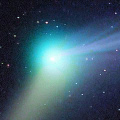
|
Now it is 10.4 mag (Mar. 24, Thomas Lehmann). It was expected to brighten up to 4-5 mag from autumn to winter. But actually, it was 6 mag at best. Now it is fading rapidly. It is observable in excellent condition in the Northern Hemisphere. It is not observable after this in the Southern Hemisphere.
Date(TT) R.A. (2000) Decl. Delta r Elong. m1 Best Time(A, h)
Apr. 2 4 24.45 49 46.2 2.650 2.388 64 10.9 19:48 (128, 44)
Apr. 9 4 30.06 48 53.7 2.847 2.477 58 11.2 19:55 (128, 39)
|
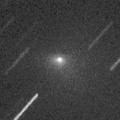
|
First return of an object discovered as an asteroid 2007 VA85 in 2007. It brightened very rapidly since mid February, and now it is so bright as 12.6 mag (Mar. 28, Thomas Lehmann). It is alreay unobservable in the Southern Hemisphere. It will be unobservable in late April also in the Northern Hemisphere.
Date(TT) R.A. (2000) Decl. Delta r Elong. m1 Best Time(A, h)
Apr. 2 3 26.86 31 54.0 1.540 1.115 46 11.2 19:48 (111, 28)
Apr. 9 3 21.31 34 4.5 1.682 1.117 39 11.5 19:55 (118, 21)
|

|
Now it is 12.9 mag (Mar. 21, Thomas Lehmann). It keeps 12-13 mag for a long time from 2015 autumn to 2016 summer. In the Northern Hemispehre, it keeps observable in good condition for a long time. It keeps unobservable until July in the Southern Hemisphere.
Date(TT) R.A. (2000) Decl. Delta r Elong. m1 Best Time(A, h)
Apr. 2 20 22.07 68 7.1 2.729 2.681 76 12.2 4:19 (205, 47)
Apr. 9 20 11.45 69 11.4 2.718 2.688 77 12.2 4:08 (202, 48)
|

|
Now it is 12.2 mag (Mar. 27, Thomas Lehmann). It will brighten up to 11 mag from spring to summer. In the Northern Hemisphere, it will be getting lower after this, and will be unobservable in June. It locates somewhat low in the Southern Hemisphere, but it keeps observable until August.
Date(TT) R.A. (2000) Decl. Delta r Elong. m1 Best Time(A, h)
Apr. 2 5 54.75 22 28.9 1.883 1.912 76 12.3 19:48 ( 80, 54)
Apr. 9 6 7.60 22 40.2 1.919 1.877 72 12.2 19:55 ( 85, 49)
|
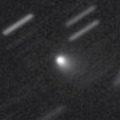
|
Now it is 14.0 mag (Mar. 30, Sandor Szabo). Brightening very rapidly. It will be observable at 11 mag in good condition from spring to summer.
Date(TT) R.A. (2000) Decl. Delta r Elong. m1 Best Time(A, h)
Apr. 2 11 59.36 20 58.1 0.987 1.926 151 13.1 23:14 ( 0, 76)
Apr. 9 11 52.78 20 59.5 0.977 1.889 145 12.9 22:40 ( 0, 76)
|
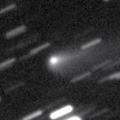
|
Now it is 13.4 mag (Mar. 3, Hiroshi Abe). It keeps 13 mag for a while. It is observable in excellent condition in the Southern Hemisphere. But it locates somewhat low in the Northern Hemisphere.
Date(TT) R.A. (2000) Decl. Delta r Elong. m1 Best Time(A, h)
Apr. 2 16 0.06 -22 39.5 1.486 2.261 129 13.2 3:18 ( 0, 32)
Apr. 9 16 0.12 -22 57.5 1.439 2.274 136 13.2 2:51 ( 0, 32)
|

|
Now it is bright as 12.7 mag (Mar. 30, Sandor Szabo). Although it was faint as 19.0 mag in January (Jan. 10, B. Lutkenhoner), it brightened rapidly in February. It keeps observable until May in the Northern Hemisphere, or until July in the Southern Hemisphere. But it keeps extremely low. The brightness differs in every apparition. It was not observed in the last apparition.
Date(TT) R.A. (2000) Decl. Delta r Elong. m1 Best Time(A, h)
Apr. 2 3 11.92 14 53.4 1.809 1.181 37 13.5 19:48 ( 97, 17)
Apr. 9 3 40.28 15 54.8 1.819 1.189 37 13.6 19:55 ( 98, 16)
|

|
It is observable in excellent condition in the Southern Hemisphere. Now it is 16.5 mag (Mar. 30, Jean-Francois Soulier).
Date(TT) R.A. (2000) Decl. Delta r Elong. m1 Best Time(A, h)
Apr. 2 19 46.81 -25 34.9 6.067 5.949 78 13.7 4:19 (321, 18)
Apr. 9 19 49.65 -25 28.5 5.955 5.947 84 13.7 4:08 (324, 20)
|
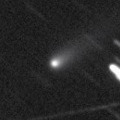
|
Now it is 14.6 mag (Mar. 10, Catalina Sky Survey). It is observable at 14-15 mag in good condition from winter to summer.
Date(TT) R.A. (2000) Decl. Delta r Elong. m1 Best Time(A, h)
Apr. 2 13 17.63 -10 47.6 1.360 2.351 170 14.6 0:37 ( 0, 44)
Apr. 9 13 9.34 -11 42.4 1.346 2.346 175 14.6 0:01 ( 0, 43)
|

|
Now it is 15.1 mag (Jan. 2, Ken-ichi Kadota). Distant object, but it keeps observable at 14-15 mag for a long time from 2015 to 2016. It becomes unobservable temporarily from January to March in the Southern Hemisphere, or from February to April in the Northern Hemisphere.
Date(TT) R.A. (2000) Decl. Delta r Elong. m1 Best Time(A, h)
Apr. 2 23 26.61 -1 44.5 5.821 4.900 20 14.7 4:19 (268, -6)
Apr. 9 23 33.56 -1 14.6 5.777 4.896 25 14.7 4:08 (269, -4)
|
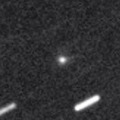
|
Now it is 15.4 mag (Mar. 15, Yuji Ohshima). It will be observable at 14 mag in good condition from spring to summer.
Date(TT) R.A. (2000) Decl. Delta r Elong. m1 Best Time(A, h)
Apr. 2 19 54.36 -15 28.3 2.501 2.440 74 14.8 4:19 (313, 25)
Apr. 9 20 5.56 -14 54.4 2.419 2.436 79 14.8 4:08 (314, 26)
|

|
It will brighten up to 11 mag from summer to autumn. It will appear in the morning sky in summer, but it keeps low for some time.
Date(TT) R.A. (2000) Decl. Delta r Elong. m1 Best Time(A, h)
Apr. 2 23 58.64 10 53.6 2.968 2.007 13 15.0 4:19 (253, -5)
Apr. 9 0 14.40 12 21.4 2.910 1.959 14 14.8 4:08 (252, -4)
|
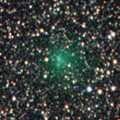
|
It is not observable now. It will appear in the morning sky in summer, but it will be fainter than 17 mag.
Date(TT) R.A. (2000) Decl. Delta r Elong. m1 Best Time(A, h)
Apr. 2 1 47.60 2 26.8 2.925 1.981 15 14.9 19:48 ( 98, -7)
Apr. 9 2 2.83 3 54.5 2.986 2.024 13 15.1 19:55 (103,-10)
|
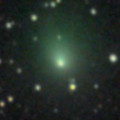
|
It is not observable now. It will appear in the morning sky in June. But the comet will be faint as 16-17 mag.
Date(TT) R.A. (2000) Decl. Delta r Elong. m1 Best Time(A, h)
Apr. 2 0 25.39 -0 22.9 3.169 2.181 7 14.9 4:19 (258,-17)
Apr. 9 0 38.83 0 58.1 3.200 2.223 10 15.1 4:08 (257,-16)
|

|
Now it is 16.0 mag (Mar. 2, Hiroshi Abe). It will brighten up to 14 mag in summer. But it is not observable at the highlight. It will be unobservable soon.
Date(TT) R.A. (2000) Decl. Delta r Elong. m1 Best Time(A, h)
Apr. 2 3 4.89 10 52.0 2.809 2.070 34 15.2 19:48 ( 94, 13)
Apr. 9 3 19.98 12 0.8 2.835 2.054 31 15.0 19:55 ( 98, 10)
|
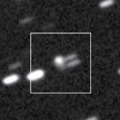
|
Now it is 14.8 mag (Mar. 7, Tsutomu Seki). It is expected to brighten up to 7 mag in 2017 summer. In the Northern Hemisphere, it keeps observable in good condition until the highlight while the comet will be brightening. In the Southern Hemisphere, it is not observable until early 2017.
Date(TT) R.A. (2000) Decl. Delta r Elong. m1 Best Time(A, h)
Apr. 2 6 43.81 61 9.4 5.170 5.187 85 15.7 19:48 (155, 59)
Apr. 9 6 46.56 60 37.6 5.197 5.125 80 15.7 19:55 (150, 56)
|
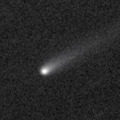
|
It brightened very rapidly in 2015 spring, and reached up to 13.8 mag (May 11, Sandor Szabo). It is bright as 14.2 mag still now (Mar. 11, Yasukazu Ikari). It keeps 15 mag for a while until spring. It is observable in excellent condition in the Southern Hemisphere. But it locates somewhat low in the Northern Hemisphere.
Date(TT) R.A. (2000) Decl. Delta r Elong. m1 Best Time(A, h)
Apr. 2 14 7.93 -30 12.1 3.146 4.030 148 15.7 1:27 ( 0, 25)
Apr. 9 14 4.41 -30 4.7 3.130 4.056 154 15.8 0:56 ( 0, 25)
|

|
It brightened up to 3.7 mag and became a naked eye comet in mid January in 2015 (Jan. 13, Marek Biely). Now it is fading. It has already faded down to 15.8 mag (Mar. 15, Yuji Ohshima). In the Northern Hemisphere, it keeps observable for a long time until the comet fades out. It locates somewhat low in the Southern Hemisphere.
Date(TT) R.A. (2000) Decl. Delta r Elong. m1 Best Time(A, h)
Apr. 2 18 31.61 24 17.2 5.134 5.251 91 15.9 4:19 (293, 68)
Apr. 9 18 30.44 24 50.5 5.116 5.315 96 15.9 4:08 (298, 71)
|
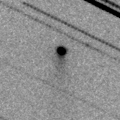
|
It passed only 0.024 a.u. from the earth on Mar. 23, and brightened up to 12.8 mag (Mar. 22, Paul Camilleri). Almost stellar. It will fade out rapidly after this. It has already faded down to 14.0 mag (Mar. 26, Jean-Francois Soulier). It is observable in excellent condition in the Northern Hemisphere. It keeps low after this in the Southern Hemisphere. The orbital elements are similar to those of 252P/LINEAR.
Date(TT) R.A. (2000) Decl. Delta r Elong. m1 Best Time(A, h)
Apr. 2 15 55.42 46 30.1 0.087 1.038 113 16.0 3:11 (180, 78)
Apr. 9 16 24.59 43 36.1 0.141 1.064 112 17.0 3:14 (180, 81)
|
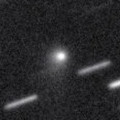
|
Now it is 15.4 mag (Mar. 10, D. Buczynski). It keeps 16 mag until autumn. It keeps observable in good condition for a long time in the Northern Hemisphere. It keeps unobservable in the Southern Hemisphere.
Date(TT) R.A. (2000) Decl. Delta r Elong. m1 Best Time(A, h)
Apr. 2 3 35.74 72 28.7 5.573 5.355 72 16.0 19:48 (159, 38)
Apr. 9 3 48.77 72 40.7 5.641 5.369 69 16.1 19:55 (159, 36)
|
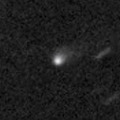
|
Now it is 15.8 mag (Mar. 13, Catalina Sky Survey). It will brighten up to 14 mag in 2017. In 2016, it keeps observable at 16 mag in good condition from winter to spring.
Date(TT) R.A. (2000) Decl. Delta r Elong. m1 Best Time(A, h)
Apr. 2 11 34.71 15 12.9 2.894 3.813 153 16.1 22:49 ( 0, 70)
Apr. 9 11 30.63 15 23.3 2.924 3.797 146 16.1 22:18 ( 0, 70)
|
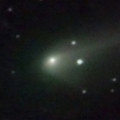
|
It brightened up to 11.1 mag in 2015 autumn (Sept. 21, Seiichi Yoshida). Now it is 14.6 mag (Mar. 9, Thomas Lehmann). It keeps observable in good condition after this, while the comet will be fading gradually.
Date(TT) R.A. (2000) Decl. Delta r Elong. m1 Best Time(A, h)
Apr. 2 11 24.09 13 22.0 1.783 2.710 152 16.1 22:39 ( 0, 68)
Apr. 9 11 19.32 13 23.8 1.877 2.759 145 16.4 22:07 ( 0, 68)
|
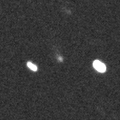
|
Now it is 16.3 mag (Feb. 2, Yasukazu Ikari). It keeps 16-17 mag for a long time until 2016 autumn. In the Southern Hemisphere, it keeps observable for a long time. It will be unobservable after this in the Northern Hemisphere.
Date(TT) R.A. (2000) Decl. Delta r Elong. m1 Best Time(A, h)
Apr. 2 3 55.65 -29 33.6 2.851 2.455 57 16.4 19:48 ( 54, -2)
Apr. 9 4 2.05 -29 58.2 2.851 2.429 55 16.3 19:55 ( 58, -7)
|
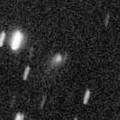
|
It brightened rapidly, and reached up to 15.5 mag (Feb. 11, Yasukazu Ikari). It will be fading after this. It has already faded down to 16.5 mag (Mar. 7, Yasukazu Ikari). It keeps observable until August when the comet becomes fainter than 18 mag in the Northern Hemisphere. It will be unobservable in May in the Southern Hemisphere.
Date(TT) R.A. (2000) Decl. Delta r Elong. m1 Best Time(A, h)
Apr. 2 8 3.31 31 49.6 2.130 2.557 103 16.3 19:48 ( 65, 83)
Apr. 9 8 4.89 33 50.6 2.225 2.544 96 16.4 19:55 ( 90, 77)
|
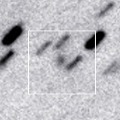
|
Now it is 16.7 mag (Mar. 4, Yuji Ohshima). It keeps 16-17 mag for a long time from 2016 to 2019. It keeps locating near by the equator.
Date(TT) R.A. (2000) Decl. Delta r Elong. m1 Best Time(A, h)
Apr. 2 7 57.27 2 35.3 9.646 9.993 107 16.4 19:48 ( 16, 57)
Apr. 9 7 57.88 2 53.0 9.741 9.982 101 16.4 19:55 ( 30, 54)
|

|
Now it is 17.4 mag (Mar. 16, Space Surveillance Telescope, Atom Site). It will brighten up to 16 mag from April to May. It is observable in excellent condition in the Southern Hemisphere. It locates somewhat low in the Northern Hemisphere.
Date(TT) R.A. (2000) Decl. Delta r Elong. m1 Best Time(A, h)
Apr. 2 15 56.03 -21 44.8 1.208 2.011 131 16.5 3:14 ( 0, 33)
Apr. 9 15 54.55 -23 57.0 1.154 2.011 137 16.5 2:45 ( 0, 31)
|
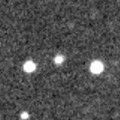
|
Now it is 16.8 mag (Mar. 17, P. C. Sherrod, L. P. Sherrod). The cometary activity is confirmed recently. It is expected to brighten up to 7 mag in 2017 spring. But it locates somewhat low at the high light.
Date(TT) R.A. (2000) Decl. Delta r Elong. m1 Best Time(A, h)
Apr. 2 11 24.50 -3 23.6 4.202 5.151 159 16.8 22:39 ( 0, 52)
Apr. 9 11 20.46 -2 52.7 4.178 5.084 151 16.7 22:08 ( 0, 52)
|
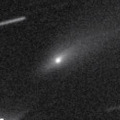
|
Now it is 17.9 mag (Mar. 7, D. Buczynski). In the Northern Hemisphere, it keeps observable in good condition after this while the comet will be fading. It locates low in the Southern Hemisphere.
Date(TT) R.A. (2000) Decl. Delta r Elong. m1 Best Time(A, h)
Apr. 2 13 51.61 30 35.6 2.364 3.204 141 16.9 1:10 ( 0, 85)
Apr. 9 13 43.87 30 46.2 2.409 3.248 140 17.0 0:35 ( 0, 86)
|
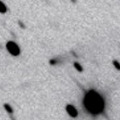
|
Now it is 16.6 mag (Feb. 19, D. Buczynski). It keeps observable at 17 mag in good condition from winter to spring.
Date(TT) R.A. (2000) Decl. Delta r Elong. m1 Best Time(A, h)
Apr. 2 15 11.77 3 28.5 1.724 2.590 142 16.9 2:30 ( 0, 58)
Apr. 9 15 8.38 3 39.9 1.694 2.603 148 17.0 1:59 ( 0, 59)
|
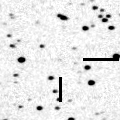
|
It was discovered around the aphelion in 2013 December. It keeps observable at 17 mag in good condition from 2016 to 2017. No observations have been reported since 2014 March.
Date(TT) R.A. (2000) Decl. Delta r Elong. m1 Best Time(A, h)
Apr. 2 12 35.03 4 46.4 1.910 2.899 169 17.1 23:49 ( 0, 60)
Apr. 9 12 28.69 5 12.4 1.892 2.866 163 17.1 23:15 ( 0, 60)
|

|
It brightened up to 11-12 mag in 2012. It has already faded down to 17.0 mag (Mar. 11, Catalina Sky Survey). It is observable at 17 mag in good condition from winter to spring.
Date(TT) R.A. (2000) Decl. Delta r Elong. m1 Best Time(A, h)
Apr. 2 10 33.83 -4 14.7 10.350 11.202 147 17.1 21:49 ( 0, 51)
Apr. 9 10 31.20 -3 55.0 10.454 11.240 139 17.1 21:19 ( 0, 51)
|
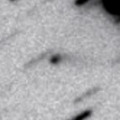
|
Now it is 17.0 mag (Mar. 1, Yasukazu Ikari). It keeps 17-18 mag for a long time until 2017 spring. It will be getting lower gradually after this. It will be unobservable in May in the Northern Hemisphere, or in June inthe Southern Hemisphere.
Date(TT) R.A. (2000) Decl. Delta r Elong. m1 Best Time(A, h)
Apr. 2 6 43.61 -6 38.3 3.703 3.836 90 17.2 19:48 ( 37, 41)
Apr. 9 6 47.86 -4 55.4 3.777 3.819 84 17.2 19:55 ( 46, 39)
|
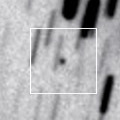
|
Now it is 17.0 mag (Mar. 17, Jean-Francois Soulier). It brightened rapidly, and became brighter than originally expected. It keeps 17 mag until 2017. It is observable in excellent condition in the Northern Hemisphere. It is not observable in the Southern Hemisphere.
Date(TT) R.A. (2000) Decl. Delta r Elong. m1 Best Time(A, h)
Apr. 2 16 41.99 72 59.2 7.185 7.321 93 17.2 3:59 (180, 52)
Apr. 9 16 27.57 73 49.6 7.193 7.316 93 17.2 3:18 (180, 51)
|

|
It was observed as bright as 13-14 mag for a long time from 2011 to 2014. Now it is fading. It is observable in excellent condition in the Southern Hemisphere. It locates extremely low in the Northern Hemisphere. No observations have been reported since August, 2015.
Date(TT) R.A. (2000) Decl. Delta r Elong. m1 Best Time(A, h)
Apr. 2 18 11.74 -33 39.9 8.997 9.220 99 17.2 4:19 (344, 19)
Apr. 9 18 10.07 -34 2.5 8.912 9.253 106 17.2 4:08 (348, 20)
|
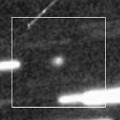
|
Appearing in the morning sky. It will be observable at 13 mag for a long time from 2017 to 2018. In 2016, it keeps observable at 16-17 mag in good condition until autumn.
Date(TT) R.A. (2000) Decl. Delta r Elong. m1 Best Time(A, h)
Apr. 2 20 24.30 -15 26.3 7.135 6.821 67 17.4 4:19 (307, 20)
Apr. 9 20 24.52 -15 2.2 6.975 6.778 74 17.3 4:08 (310, 23)
|
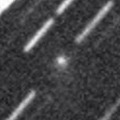
|
Now it is 17.2 mag (Feb. 11, Yuji Ohshima). It keeps observable at 17-18 mag until summer in the Northern Hemispehre. It is not observable in the Southern Hemisphere.
Date(TT) R.A. (2000) Decl. Delta r Elong. m1 Best Time(A, h)
Apr. 2 5 42.47 52 39.8 2.308 2.292 76 17.4 19:48 (134, 55)
Apr. 9 5 43.45 53 54.6 2.394 2.275 71 17.5 19:55 (135, 50)
|

|
Now it is 17.4 mag (Feb. 11, Yasukazu Ikari). It was expected to brighten up to 14 mag from winter to summer. But it is much fainter actually. It will be observable in excellent condition in the Southern Hemisphere. It locates low in the Northern Hemisphere.
Date(TT) R.A. (2000) Decl. Delta r Elong. m1 Best Time(A, h)
Apr. 2 16 35.03 -33 1.0 1.742 2.402 119 17.4 3:53 ( 0, 22)
Apr. 9 16 37.83 -34 15.7 1.707 2.431 125 17.5 3:29 ( 0, 21)
|

|
First return of a peculiar asteroid 1998 HO121. It brightened up to 16.5 mag in early 2015 (Jan. 4, M. Jaeger, E. Prosperi, S. Prosperi, W. Vollmann). It is observable at 17.5 mag again in 2016 spring.
Date(TT) R.A. (2000) Decl. Delta r Elong. m1 Best Time(A, h)
Apr. 2 13 53.03 -4 37.7 2.647 3.616 163 17.6 1:12 ( 0, 50)
Apr. 9 13 49.59 -3 57.0 2.653 3.643 169 17.5 0:41 ( 0, 51)
|
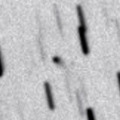
|
Now it is 17.4 mag (Mar. 13, Jean-Francois Soulier). It keeps 17.5 mag from 2016 to 2017. It is observable in good condition in the Northern Hemisphere. In the Southern Hemisphere, it locates low in 2016, and it is not observable in 2017.
Date(TT) R.A. (2000) Decl. Delta r Elong. m1 Best Time(A, h)
Apr. 2 17 29.45 22 57.9 6.142 6.481 105 17.6 4:19 (331, 76)
Apr. 9 17 28.76 24 18.6 6.061 6.468 109 17.6 4:08 (347, 79)
|
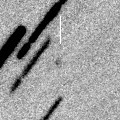
|
Now it is 17.9 mag (Mar. 3, Hidetaka Sato). It will be observable at 17.5 mag in good condition from April to May in the Southern Hemisphere. It is not observable after April in the Northern Hemisphere.
Date(TT) R.A. (2000) Decl. Delta r Elong. m1 Best Time(A, h)
Apr. 2 16 58.61 -46 36.4 0.905 1.578 111 17.8 4:17 ( 0, 9)
Apr. 9 17 17.39 -53 8.6 0.876 1.566 112 17.7 4:08 ( 0, 2)
|
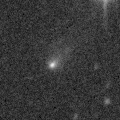
|
Now it is 17.2 mag (Mar. 17, Space Surveillance Telescope, Atom Site). It must have been observable at 16-17 mag in good condition from summer to autumn in the Northern Hemisphere, but it was not discovered. It will be fading after this, and will be fainter than 18 mag in April.
Date(TT) R.A. (2000) Decl. Delta r Elong. m1 Best Time(A, h)
Apr. 2 10 32.77 22 44.1 2.069 2.885 137 17.7 21:47 ( 0, 78)
Apr. 9 10 25.96 20 54.0 2.184 2.934 130 17.9 21:13 ( 0, 76)
|
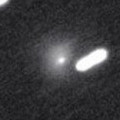
|
Very far object. Outburst occured on Feb. 20, 2015, and it brightened up to 15 mag. But it is faint as 18.1 mag now (Mar. 18, W. Hasubick). It is observable in excellent condition in the Southern Hemisphere. It locates somewhat low in the Northern Hemisphere.
Date(TT) R.A. (2000) Decl. Delta r Elong. m1 Best Time(A, h)
Apr. 2 13 24.91 -25 53.3 8.238 9.167 157 17.7 0:44 ( 0, 29)
Apr. 9 13 22.95 -25 39.7 8.213 9.169 161 17.7 0:14 ( 0, 29)
|
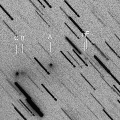
|
First return of a periodic comet which brightened up to 8 mag in major outburst in 2010. It will be observable in excellent condition from winter to spring. However, now it is faint; the fragment A is 17.9 mag (Mar. 15, Catalina Sky Survey), the fragment C is 17.8 mag (Mar. 15, Catalina Sky Survey), the fragment H is 18.9 mag (Mar. 6, C. Rinner, F. Kugel). It will be 17 mag at best in this apparition. Fragments B to J are also observed.
Date(TT) R.A. (2000) Decl. Delta r Elong. m1 Best Time(A, h)
Apr. 2 9 8.47 22 15.9 0.819 1.580 120 17.7 20:25 ( 0, 77)
Apr. 9 9 18.06 20 0.3 0.866 1.588 116 17.9 20:07 ( 0, 75)
|
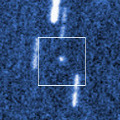
|
Now it is 17.2 mag (Mar. 19, Space Surveillance Telescope, Atom Site). It becomes brighter than at the discovery in 2015. It is observable at 17.5 mag in good condition from spring to summer.
Date(TT) R.A. (2000) Decl. Delta r Elong. m1 Best Time(A, h)
Apr. 2 15 19.05 -2 50.7 5.535 6.350 141 17.7 2:37 ( 0, 52)
Apr. 9 15 15.72 -1 44.1 5.493 6.368 148 17.7 2:07 ( 0, 53)
|

|
STEREO spacecraft observed it at 8-9 mag on Feb. 21-22. It approached to the sun down to 0.58 a.u. on Mar. 9, but it was not observable around the perihelion passage. It is appearing in the evening sky now. But it will fade out very rapidly.
Date(TT) R.A. (2000) Decl. Delta r Elong. m1 Best Time(A, h)
Apr. 2 2 58.14 10 22.5 1.326 0.735 33 17.8 19:48 ( 95, 12)
Apr. 9 3 43.42 12 56.5 1.334 0.818 37 19.0 19:55 ( 95, 16)
|
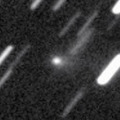
|
It brightened up to 15.7 mag in winter (Jan. 14, Toshiyuki Takahashi). Now it is fading. It has already faded down to 17.2 mag (Mar. 11, iTelescope Observatory, Mayhill). It will be fainter than 18 mag in April. It locates somewhat low in the Southern Hemisphere.
Date(TT) R.A. (2000) Decl. Delta r Elong. m1 Best Time(A, h)
Apr. 2 8 4.50 30 17.0 1.938 2.389 104 17.8 19:48 ( 52, 83)
Apr. 9 8 11.78 30 17.5 2.027 2.398 98 17.9 19:55 ( 71, 78)
|
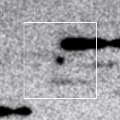
|
It keeps 16 mag for a long time from 2017 to 2018. Now it is 17.6 mag (Mar. 11, Yasukazu Ikari). In the Southern Hemisphere, it keeps observable in good condition until early summer. It will be unobservable in May in the Northern Hemispehre.
Date(TT) R.A. (2000) Decl. Delta r Elong. m1 Best Time(A, h)
Apr. 2 9 4.06 -28 21.6 6.301 6.890 122 17.9 20:19 ( 0, 27)
Apr. 9 9 1.12 -27 4.9 6.335 6.859 117 17.9 19:55 ( 1, 28)
|

|
Now it is 17.9 mag (Mar. 19, iTelescope Observatory, Siding Spring). It keeps 17-18 mag for a long time from 2016 to 2017. In 2016, it is observable in excellent condition in the Southern Hemisphere, but it locates extremely low in the Northern Hemispehre.
Date(TT) R.A. (2000) Decl. Delta r Elong. m1 Best Time(A, h)
Apr. 2 12 9.21 -46 56.9 3.176 3.969 137 18.0 23:24 ( 0, 8)
Apr. 9 12 5.62 -45 50.6 3.120 3.932 139 17.9 22:53 ( 0, 9)
|

|
Although it was bright as 17 mag at the discovery in 2006, it faded out before the perihelion passage in 2008, and it became lost. Now it is fainter than 22 mag (June 15, 2015, Erwin Schwab, Marco Micheli).
Date(TT) R.A. (2000) Decl. Delta r Elong. m1 Best Time(A, h)
Apr. 2 16 6.39 4 18.0 3.840 4.537 129 18.0 3:25 ( 0, 59)
Apr. 9 16 4.90 4 47.0 3.766 4.530 135 17.9 2:56 ( 0, 60)
|
|
![]()
 C/2013 US10 ( Catalina )
C/2013 US10 ( Catalina ) 333P/LINEAR
333P/LINEAR C/2014 W2 ( PanSTARRS )
C/2014 W2 ( PanSTARRS ) 81P/Wild 2
81P/Wild 2 9P/Tempel 1
9P/Tempel 1 116P/Wild 4
116P/Wild 4 104P/Kowal 2
104P/Kowal 2 29P/Schwassmann-Wachmann 1
29P/Schwassmann-Wachmann 1 77P/Longmore
77P/Longmore C/2011 KP36 ( Spacewatch )
C/2011 KP36 ( Spacewatch ) 53P/Van Biesbroeck
53P/Van Biesbroeck 43P/Wolf-Harrington
43P/Wolf-Harrington 10P/Tempel 2
10P/Tempel 2 22P/Kopff
22P/Kopff 118P/Shoemaker-Levy 4
118P/Shoemaker-Levy 4 C/2015 V2 ( Johnson )
C/2015 V2 ( Johnson ) C/2014 W11 ( PanSTARRS )
C/2014 W11 ( PanSTARRS ) C/2014 Q2 ( Lovejoy )
C/2014 Q2 ( Lovejoy ) P/2016 BA14 ( PanSTARRS )
P/2016 BA14 ( PanSTARRS ) C/2013 V4 ( Catalina )
C/2013 V4 ( Catalina ) 65P/Gunn
65P/Gunn 67P/Churyumov-Gerasimenko
67P/Churyumov-Gerasimenko C/2015 T4 ( PanSTARRS )
C/2015 T4 ( PanSTARRS ) C/2015 Y1 ( LINEAR )
C/2015 Y1 ( LINEAR ) C/2014 B1 ( Schwartz )
C/2014 B1 ( Schwartz ) 100P/Hartley 1
100P/Hartley 1 C/2015 ER61 ( PanSTARRS )
C/2015 ER61 ( PanSTARRS ) 19P/Borrelly
19P/Borrelly 180P/NEAT
180P/NEAT P/2013 YG46 ( Spacewatch )
P/2013 YG46 ( Spacewatch ) C/2006 S3 ( LONEOS )
C/2006 S3 ( LONEOS ) C/2015 X7 ( ATLAS )
C/2015 X7 ( ATLAS ) C/2014 R3 ( PanSTARRS )
C/2014 R3 ( PanSTARRS ) C/2010 S1 ( LINEAR )
C/2010 S1 ( LINEAR ) C/2015 O1 ( PanSTARRS )
C/2015 O1 ( PanSTARRS ) C/2015 W1 ( Gibbs )
C/2015 W1 ( Gibbs ) C/2014 Y1 ( PanSTARRS )
C/2014 Y1 ( PanSTARRS ) (347449) 2012 TW236
(347449) 2012 TW236 C/2014 OE4 ( PanSTARRS )
C/2014 OE4 ( PanSTARRS ) C/2016 C2 ( NEOWISE )
C/2016 C2 ( NEOWISE ) C/2015 YG1 ( NEOWISE )
C/2015 YG1 ( NEOWISE ) C/2013 C2 ( Tenagra )
C/2013 C2 ( Tenagra ) 332P/2015 Y2 ( Ikeya-Murakami )
332P/2015 Y2 ( Ikeya-Murakami ) C/2015 LC2 ( PanSTARRS )
C/2015 LC2 ( PanSTARRS ) P/2003 T12 ( SOHO )
P/2003 T12 ( SOHO ) 211P/Hill
211P/Hill C/2016 A1 ( PanSTARRS )
C/2016 A1 ( PanSTARRS ) C/2016 B1 ( NEOWISE )
C/2016 B1 ( NEOWISE ) P/2006 F1 ( Kowalski )
P/2006 F1 ( Kowalski )![]()













































